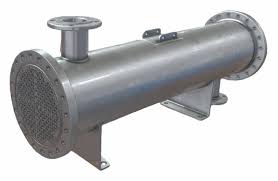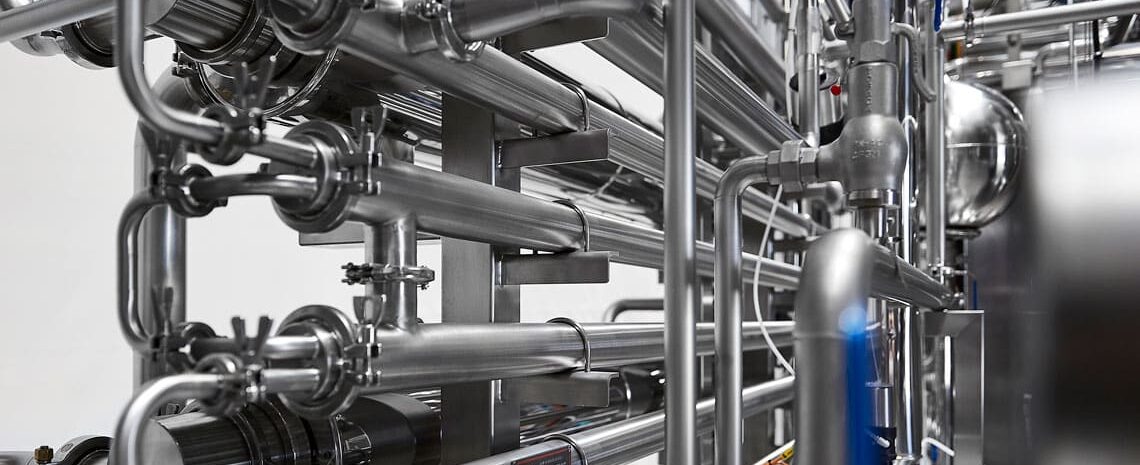Introduction
Heat exchangers are crucial components in various industrial processes, facilitating the transfer of heat between two or more fluids without mixing them. The efficiency of heat exchangers significantly impacts energy consumption and overall system performance. When choosing a heat exchanger, one key consideration is the design: single-pass versus multi-pass configurations. Each design has its advantages and drawbacks that affect efficiency, pressure drop, maintenance, and overall operational effectiveness.
Single-Pass Heat Exchangers
Definition: In a single-pass heat exchanger, the fluid flows through the heat exchanger only once, making a single pass through the heat transfer area.

Advantages:
- Simplicity: Single-pass heat exchangers are generally simpler in design, which can lead to easier installation and maintenance.
- Lower Pressure Drop: With a single flow path, there is typically less resistance to fluid flow, resulting in a lower pressure drop across the exchanger. This characteristic is advantageous for systems where maintaining pressure is critical.
- Lower Cost: The simpler design often translates to lower manufacturing costs, making single-pass heat exchangers more economical for certain applications.
Disadvantages:
- Limited Heat Transfer Efficiency: The single-pass design may not achieve the desired temperature change or heat transfer efficiency, especially when dealing with large temperature differentials.
- Potential for Lower Effectiveness: For applications requiring significant heat recovery, single-pass heat exchangers may not perform as well as multi-pass designs.
Multi-Pass Heat Exchangers
Definition: Multi-pass heat exchangers allow the fluid to flow through the heat exchanger multiple times, creating multiple paths for heat transfer.

Advantages:
- Increased Heat Transfer Efficiency: By allowing the fluid to make multiple passes, multi-pass heat exchangers can significantly enhance heat transfer rates. This design is particularly effective for applications with larger temperature differences between the hot and cold fluids.
- Improved Effectiveness: Multi-pass designs can achieve higher overall heat transfer coefficients, making them suitable for applications requiring maximum heat recovery and efficiency.
- Better Control over Outlet Temperature: With multiple passes, operators have more flexibility to achieve the desired outlet temperatures for both the hot and cold fluids.
Disadvantages:
- Increased Pressure Drop: The multiple flow paths can lead to higher pressure drops across the heat exchanger, which may require additional pumping power and can complicate system design.
- Complexity: Multi-pass heat exchangers are generally more complex in design, which may lead to higher installation and maintenance costs. They may also require more space compared to single-pass units.
Efficiency Comparison
- Heat Transfer: Multi-pass heat exchangers are generally more efficient in transferring heat due to their ability to create higher thermal exchange rates. The increased surface area and longer flow paths allow for greater heat interaction between the fluids.
- Pressure Drop: While single-pass units maintain lower pressure drops, multi-pass units may require additional energy to overcome the resistance created by the multiple flow paths. This consideration is critical in applications where energy consumption is a primary concern.
- Temperature Change: Multi-pass heat exchangers are better suited for applications where significant temperature changes are required. Their design allows for improved thermal performance and temperature control.
Conclusion
the choice between single-pass and multi-pass heat exchangers depends on specific application requirements, including desired efficiency, allowable pressure drop, cost considerations, and space constraints. While single-pass heat exchangers offer simplicity and lower costs, multi-pass designs provide superior heat transfer efficiency and control. Careful analysis of these factors will ensure the selection of the most appropriate heat exchanger type, leading to optimized performance and energy savings in industrial processes.
